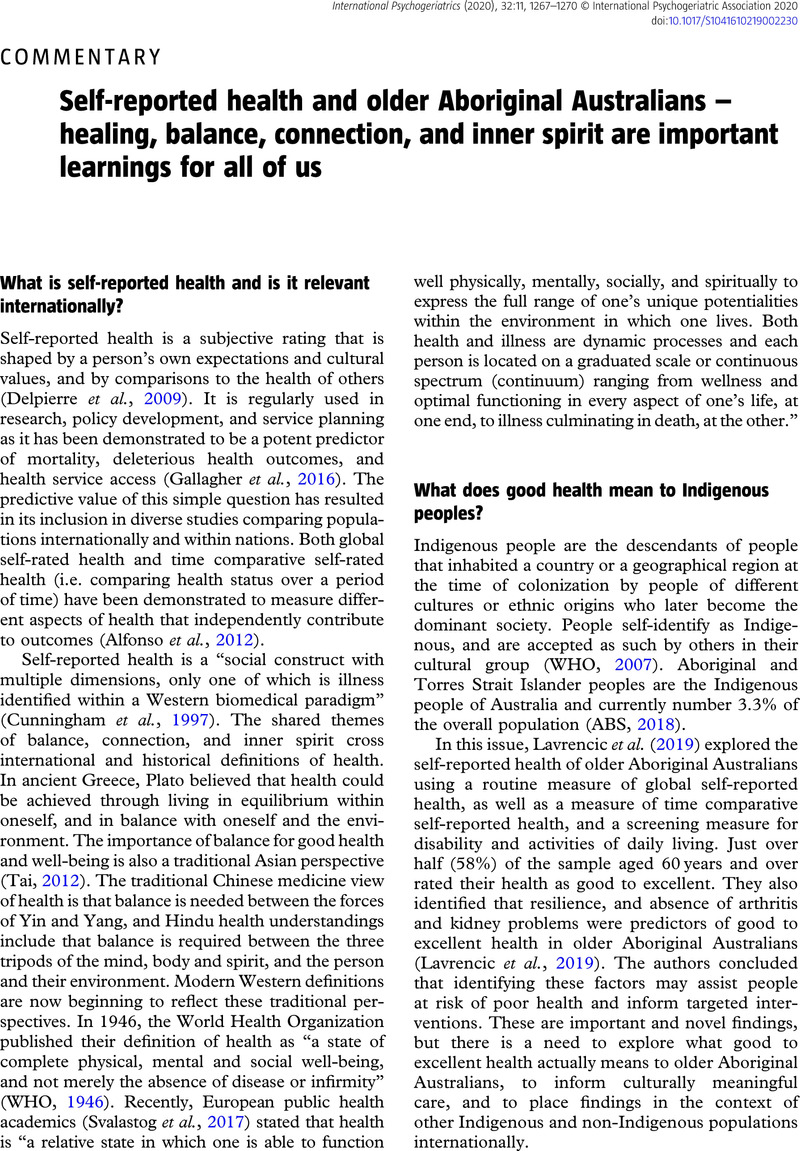Crossref Citations
This article has been cited by the following publications. This list is generated based on data provided by Crossref.
Kydd, Angela
and
Rees, Margaret
2023.
Subjective aging: factors influencing individuals’ perspectives.
International Psychogeriatrics,
Vol. 35,
Issue. 10,
p.
541.
Taylor, Kevin
Ratcliffe, Julie
Bessarab, Dawn
and
Smith, Kate
2023.
Valuing indigenous quality of life: A review of preference-based quality of life instruments and elicitation techniques with global older indigenous populations.
Social Science & Medicine,
Vol. 336,
Issue. ,
p.
116271.



